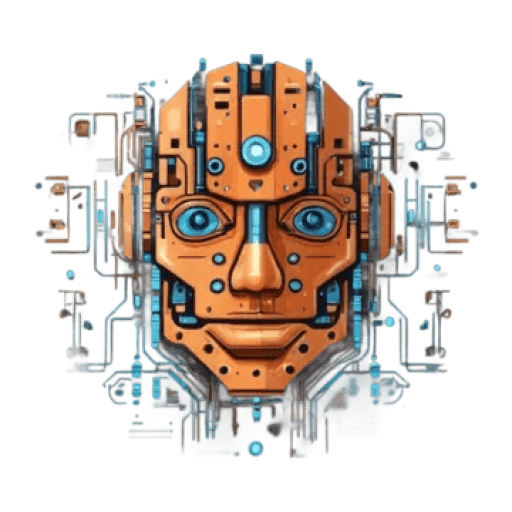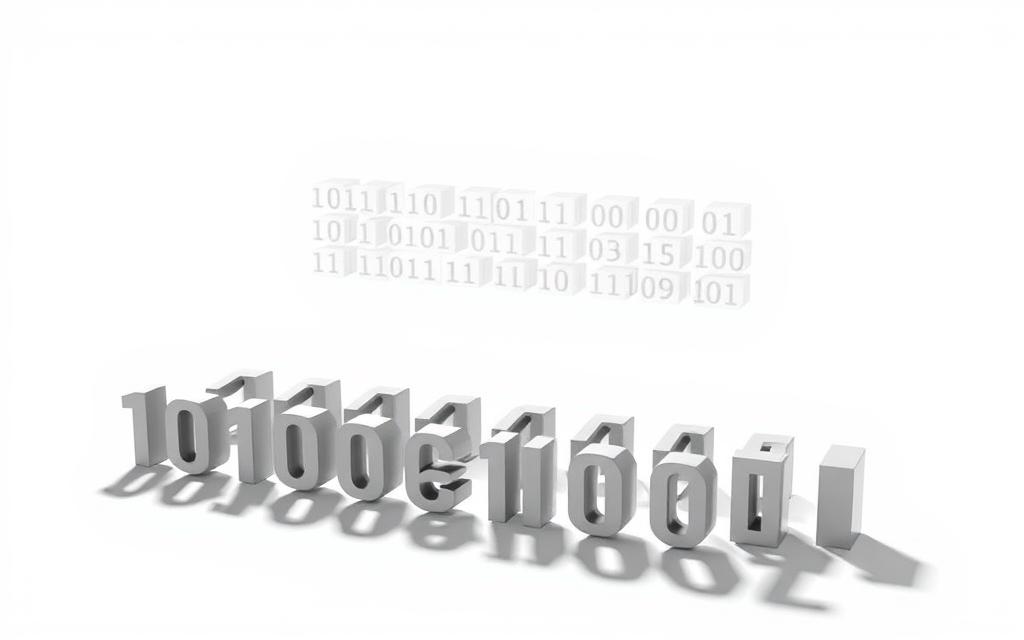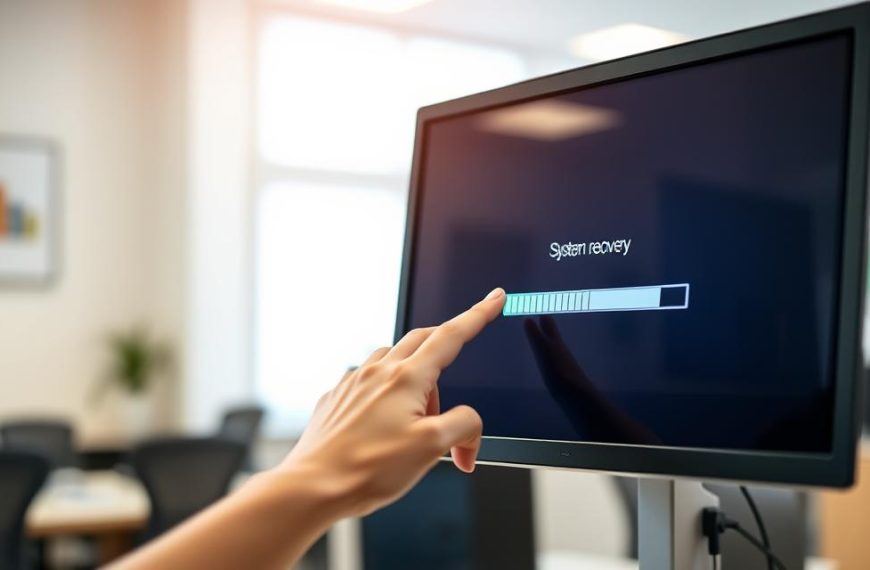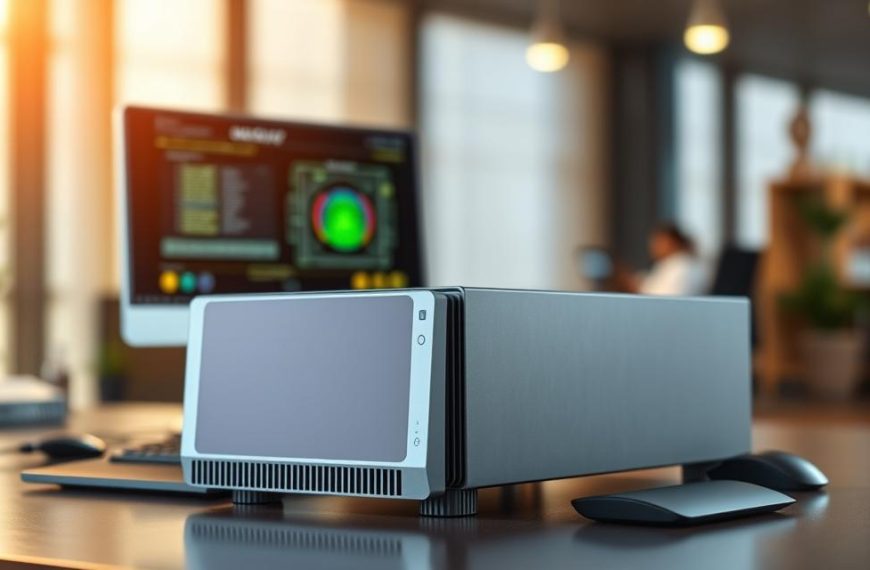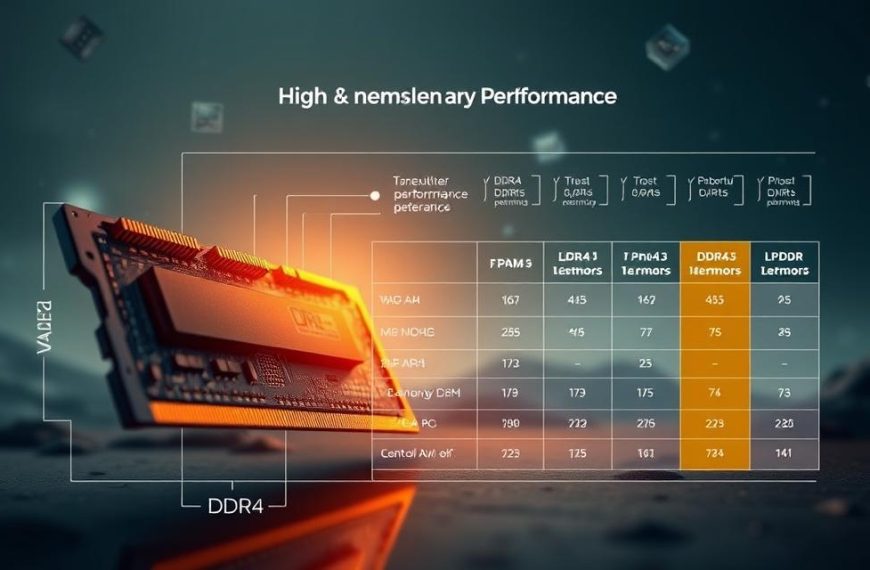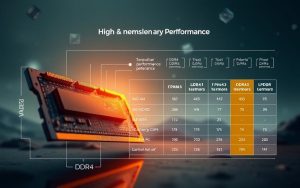The hexadecimal number system is key to digital systems. It’s a base-16 way that changes how computers show binary info.
This system is different from our usual decimal system. It uses sixteen symbols, including 0-9 and letters A-F. Each symbol stands for four binary digits.
The beauty of computing base-16 is how well it fits with binary. It’s great for showing bytes and memory addresses. Programmers love it for being short and easy to read.
Knowing about hex in computer science helps a lot in programming. It connects human-friendly formats to machine language. This knowledge is key for fixing problems and understanding systems.
What Is the Hexadecimal Number System in Computer Science
Humans use decimal systems, but computers don’t. The hexadecimal system is a bridge. It makes binary data easier for humans to understand.
Definition and Base-16 Foundation
The hexadecimal system is based on 16, not 10 like our decimal system. It uses 16 symbols: 0-9 and A-F. A-F stand for 10-15.
Each spot in a hexadecimal number is a power of 16. This is similar to how decimal numbers are powers of 10. It’s great for computer science hex because it makes binary data more compact.
This system is elegant because it matches binary perfectly. 16 is 2⁴, so each hexadecimal digit is four binary digits. This makes it easy to switch between the two.
Historical Context and Adoption
The use of hex in computing started in the 1950s. Scientists saw its value for binary data. Early computers like SWAC and Bendix G-15 used it, but with different symbols at first.
Later, the industry agreed on using A-F for consistency. This made it easier for different computers to work together. It was a big step forward.
As computer memory grew, hex became even more important. It made it easier to deal with big memory addresses. This was a game-changer for programmers and system designers.
Core Components of Hexadecimal
To understand hexadecimal, you need to know its basic parts. These elements make the system efficient and useful for computers.
Digits 0-9 and Letters A-F
The hexadecimal system has sixteen unique symbols. The first ten are the digits 0 through 9. The last six are letters A through F.
Each letter has a special decimal value:
- A represents 10
- B represents 11
- C represents 12
- D represents 13
- E represents 14
- F represents 15
This mix of numbers and letters makes a neat way to write big numbers. It uses fewer characters than decimal or binary systems.
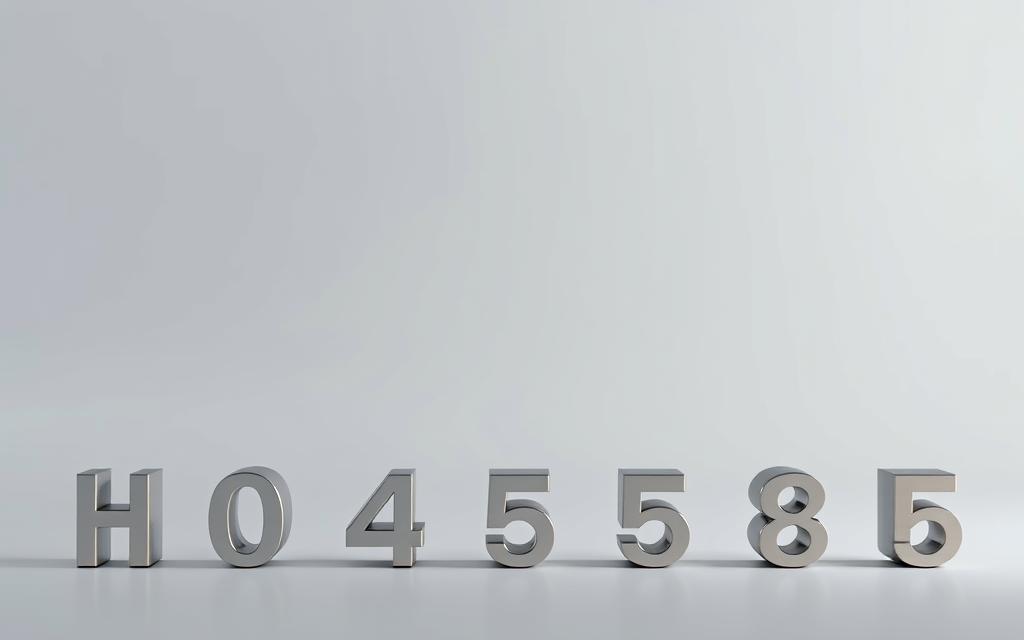
Place Value System Explained
Hexadecimal uses a system where each digit’s value changes based on its position. This is based on powers of 16.
The rightmost digit is for 160 (units place). The next digit is for 161 (sixteens place). This goes on, with each position worth a higher power of 16.
Let’s look at the hexadecimal number AB12:
- A (10) × 163 = 40960
- B (11) × 162 = 2816
- 1 × 161 = 16
- 2 × 160 = 2
Adding these up, we get the decimal number: 40960 + 2816 + 16 + 2 = 43,794.
This place value system lets hexadecimal show binary data well. It groups four binary digits into one hexadecimal digit, making it easier for humans to read.
Hexadecimal Compared to Decimal and Binary
Hexadecimal is special in computing because it bridges two worlds. Decimal is for humans, and binary is for computers. Hexadecimal is in the middle, making it key for programmers and designers.
Differences in Base and Representation
Each system has a different base. Decimal uses 0-9, binary uses 0 and 1, and hexadecimal uses 0-9 and A-F. This makes hexadecimal unique.
For example, 255 in decimal is 11111111 in binary and FF in hexadecimal. Hexadecimal is great for big binary numbers because it’s shorter.
Why Hexadecimal Bridges Binary and Human Readability
Hexadecimal is powerful because it links to binary. Each hexadecimal digit is like four binary bits. This makes it easier to read than long binary strings.
A 32-bit binary value is hard to read. But in hexadecimal, it’s D6F6CDAD. This makes it easier to understand and work with.
Hexadecimal helps reduce mistakes when working with binary. It’s easier for programmers to spot patterns and values. This is why hexadecimal is used in many areas, from colour codes to hardware IDs.
Converting Binary to Hexadecimal
Learning to convert binary to hexadecimal is key in computer science. It makes data easier to read and understand. This skill is vital for programmers and system analysts.
Grouping Bits into Nybbles
We start by grouping binary digits into chunks. These chunks are called nybbles and have four bits each. They match perfectly with hexadecimal’s base-16 system.
We add leading zeros if needed to fill the groups. This method ensures we convert binary to hexadecimal correctly.
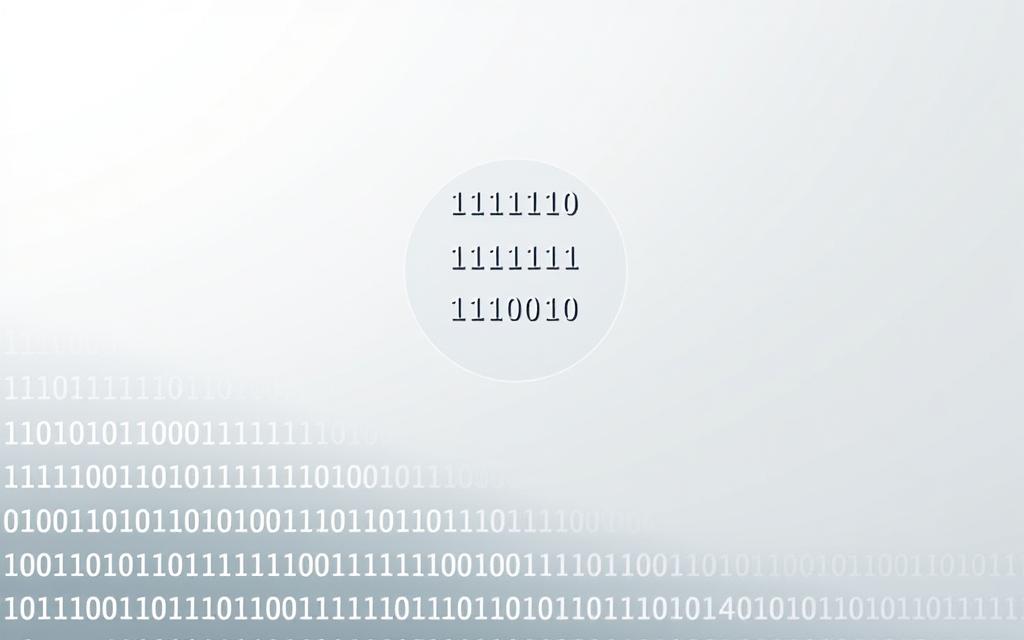
Practical Conversion Examples
Let’s look at examples to understand the conversion better. These examples show how binary becomes hexadecimal.
For instance, the binary 11100011 is split into 1110 and 0011. These become E and 3 in hexadecimal. So, 111000112 is E316.
Another example is 10110110. It breaks down into 1011 and 0110. These are B and 6 in hexadecimal, making 101101102 equal B616. Hexadecimal makes eight binary digits into two characters.
| Binary Value | Grouped Nybbles | Hexadecimal Result |
|---|---|---|
| 11010111 | 1101 0111 | D7 |
| 00111010 | 0011 1010 | 3A |
| 10000101 | 1000 0101 | 85 |
| 11110000 | 1111 0000 | F0 |
This table shows more examples of binary to hexadecimal conversions. It shows how every four binary bits equals one hexadecimal digit.
These techniques help computer experts work more efficiently. They can switch between binary and hexadecimal easily. This skill is critical for debugging, memory analysis, and low-level programming.
Converting Hexadecimal to Decimal
Learning to change hexadecimal to decimal helps us understand how computers work. It lets tech experts and programmers see hex values in a base-10 system they know better.
Mathematical Calculation Method
The mathematical calculation for hex to decimal is simple. It uses powers of sixteen. Each hex digit’s place value is a power of 16, starting from the right.
To convert:
- Write down the hexadecimal number
- Change any letters (A-F) to their decimal numbers (10-15)
- Multiply each digit by 16 to the power of its position
- Add up all the results to find the decimal number
Let’s look at the hex value 1A5. The rightmost digit (5) is 5 × 16⁰ = 5. The middle digit (A, or 10) is 10 × 16¹ = 160. The leftmost digit (1) is 1 × 16² = 256. Adding these (256 + 160 + 5) gives us 421 in decimal.
Real-World Calculation Scenarios
Many real-world examples show why converting hex to decimal is key. It’s very useful in memory addressing.
When fixing programs, developers look at memory dumps in hex. Changing these to decimal helps find specific memory spots. For example, 0x2F8 becomes 760 in decimal, making it easier to talk about.
In web design, hex is used for colour codes. HTML and CSS use it for RGB colours. The colour #FF00FF has three parts: FF (red), 00 (green), and FF (blue). In decimal, this means red=255, green=0, blue=255, making a bright magenta.
Network admins also use this skill for MAC and IPv6 addresses. It helps fix network problems and set up devices right.
Applications of Hexadecimal in Computing
Hexadecimal notation is a key tool in computing. It makes binary data easy to read and understand. It’s used in many areas, from system operations to web development.
Memory Addressing and Dumps
In system analysis, hexadecimal is vital for memory addressing hex tasks. Memory dumps show data in hexadecimal, helping technicians spot byte values easily.
Each hex digit stands for four binary bits. This makes machine code easy to read. Programmers can quickly find patterns and errors in memory.
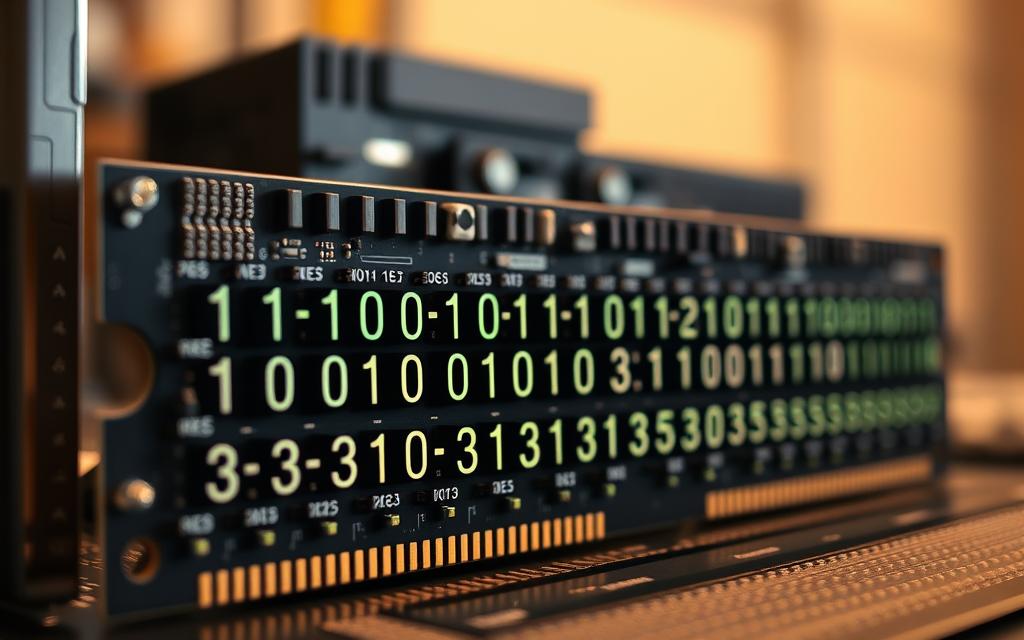
HTML and CSS Colour Codes
Web developers use hexadecimal to set colours in HTML and CSS. The #RRGGBB format shows red, green, and blue with two digits each.
This format allows for millions of colours. For example, #FF0000 is red, and #00FF00 is green. Hexadecimal colour codes help control web design.
Assembly Language and Debugging
Hexadecimal is essential in low-level programming and assembly debugging. Instructions and addresses are shown in hex in debuggers and disassemblers.
This makes it easier to follow program execution and understand hardware interactions. Programmers can quickly understand values without dealing with long binary strings.
Network and Hardware Identifiers
Hexadecimal is the base for network identifiers and hardware addresses. IPv6 addresses use hex digits, making them compact.
Globally Unique Identifiers (GUIDs) and Media Access Control (MAC) addresses also use hex. This ensures they work well across different systems.
| Application Area | Hexadecimal Format | Primary Benefit | Common Examples |
|---|---|---|---|
| Memory Addressing | 0xFFFF or FFFFh | Compact binary representation | Debugger memory displays |
| Web Colours | #RRGGBB | Precise colour specification | #FFFFFF (white), #000000 (black) |
| Network Addressing | IPv6 notation | Reduced address length | 2001:0db8:85a3::8a2e:0370:7334 |
| Hardware IDs | Hex sequences | Universal compatibility | MAC addresses, GUIDs |
For more on hexadecimal, check out the guide at Save My Exams. It’s great for learning.
Hexadecimal is widely used in computing. It helps with debugging and network setup. It makes data handling more efficient.
Benefits of Hexadecimal in Computer Systems
Hexadecimal notation is key in today’s computing world. It acts as a bridge between computer language and human understanding. While computers use binary, hex makes it easier for us to work with them.
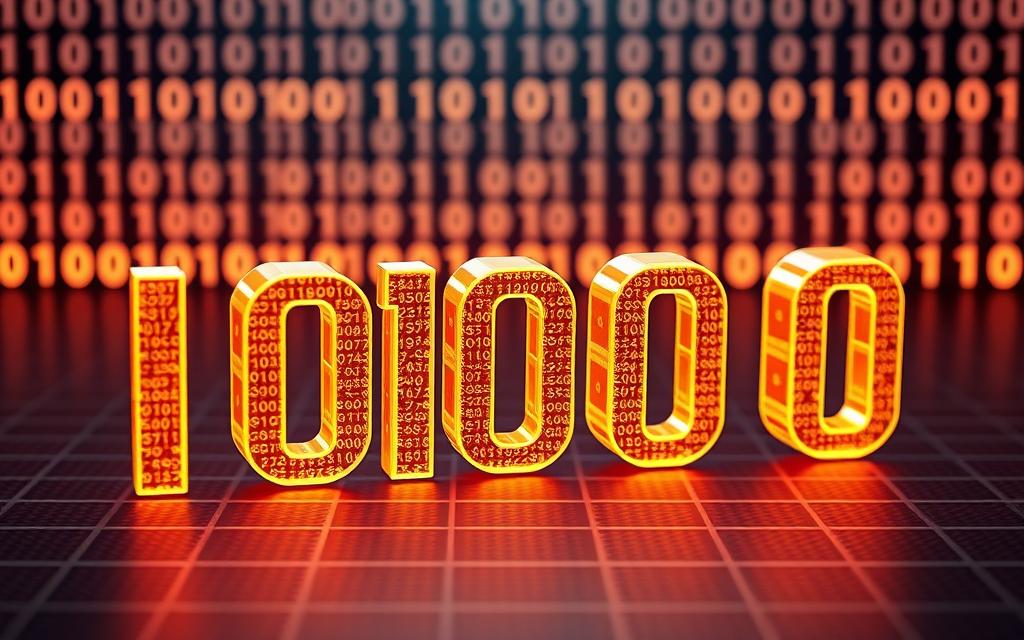
Compactness and Reduced Error Likelihood
The main hex benefits are its compact representation. Each hex digit stands for four binary bits. This makes data shorter and easier to handle.
For example, a 32-bit address is just 8 hex characters long. This makes it less likely to make mistakes when entering or checking data. It’s easier to spot errors in hex than in long binary strings.
Hex also makes it simpler to document and talk about technical stuff. Error messages and memory dumps are easier to understand in hex than in binary.
Ease of Use in Programming
Hexadecimal is great for making programming easier. Most programming languages support hex notation. They use prefixes like 0x in C or &H in BASIC.
This support makes many tasks simpler:
- Bitwise operations are easier with hex values
- Managing memory and pointers is better with hex
- Working with hardware and registers often uses hex
- Debugging is faster with hex memory dumps
Many tools and debuggers show memory in hexadecimal by default. This shows hex is better for us to understand binary data. Hex digits group well with common data sizes like bytes.
Hex is also perfect for working with bit masks and flags. Programmers can easily see patterns and change specific bits without switching between number systems.
Conclusion
The hexadecimal number system is a key link between binary machine language and formats we can read. It’s a base-16 system that makes data more compact. This is very useful in computing where speed and efficiency are key.
Hexadecimal is important in many areas like memory management and colour coding. It makes complex data easier to understand by breaking it down into nybbles. This reduces mistakes and makes data like MAC addresses and HTML colours easier to work with.
As technology advances, hexadecimal stays relevant. It’s essential in computer design. It helps in making data easy to handle as systems get more complex. It’s also taught in schools and used by professionals, ensuring it stays useful.
The hexadecimal system is vital for today’s computing. It’s great at handling and showing data efficiently. Its role in both hardware and software shows its lasting importance in our digital world.
